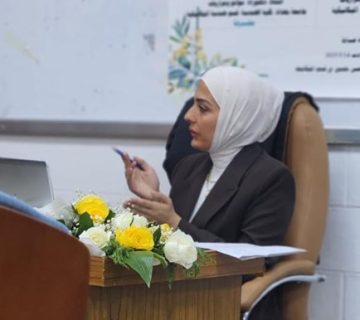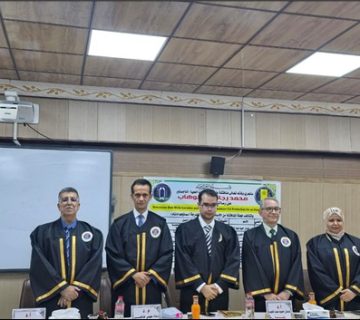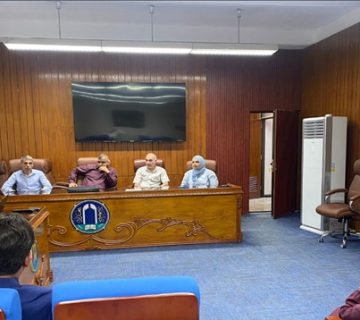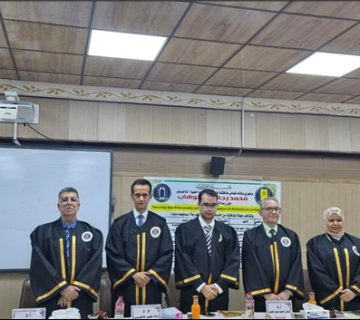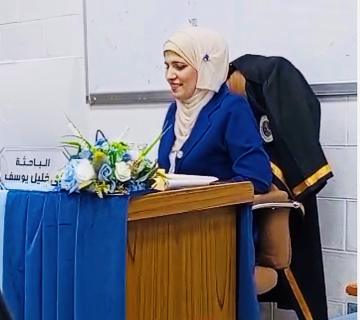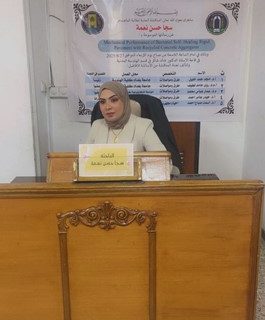The Chemical Engineering Department at the College of Engineering, University of Baghdad, held a Ph.D thesis examination titled:
“ Aromatics Extraction from Reformer-Heavy Naphtha Enhanced by Drops Technology“
By the student Marwa Asad Salih and supervised by Prof. Dr. Raghad Fareed Almilly. The examination committee consisted of Prof. Dr. Basma A. Abdulmajeed as Chairman and the membership of Prof. Dr. Muthanna J. Ahmed, Prof. Dr. Mohammed D. Salman, Prof. Dr. Mahmood K.Hummadi and Asst. Prof. Dr. Atheer M. Al-yaqoobi. After conducting the public discussion and listening to the student’s defense, the thesis was accepted. The thesis was summarized as follows:
This study presents batch and continuous approaches for extraction of aromatics from reformed heavy naphtha (RHN), provided by Al-Dora refinery in Iraq, using furfural solvent. Response Surface Methodology (RSM) based on Box–Behnken design (BBD) was employed to design the experiments to optimize the percentage extraction efficiency (E%) and reduce energy consumption in the batch study. The effects of such variables as solvent-to-feed (S/F) ratio (0.5, 1, 1.5, 2, 2.5 vol/vol), stirring speed (200, 400, 600, 800, 1000 rpm), and contact time (1, 2, 3, 4, 5 h) at an ambient temperature of 20 °C were investigated.
Following a (BBD), fifteen experimental runs systematically optimized (E%) and determined the interactive effects of these variables on (E%). Experimentally, (E%) ranged between 42.77% and 98.01%, pointing to an effective extraction process using furfural solvent. The maximum experimental (E%) of 98.0127% was achieved at an S/F ratio of 0.5, a stirring speed of 1000 rpm, and a contact time of 3 hours. The resulting model was a quadratic polynomial that accurately captured the relationship between process variables and the extraction concentration of aromatics. Statistical analysis demonstrated that the S/F ratio and its squared term significantly influenced the actual concentration. Analysis of variance (ANOVA) showed excellent agreement between experimental and predicted aromatics concentrations. The physical properties of both the extract and raffinate phases were measured and sketched as functions of the aromatics concentration in the two phases resulted from the batch experiments.
In the continuous approach, a new pilot-scale counter-current modified spray column was constructed for extracting aromatic compounds from RHN using furfural as solvent. The new design included two constructed distributors with a rotor added to the conventional spray column to benefit from the formation of drops. The effects of solvent-feed ratio (S/F) (0.25, 0.5, 1, 2) and rotor speed (0, 250, 500, 1000 rpm) were studied. The experimental results showed that the (E%) varied inversely with rotor speed but directly with S/F ratio recording 96.5% as the highest value at S/F of 2, without rotor plate.
The experimental results also showed that both S/F and the rotor speed adversely affected Sauter mean diameter (d32) values as a result of drops break up. Consequently, Sauter mean diameter d32 inversely affected the (E%) when varied from 0.0025 m to 0.0055 m, with 0.0025 m corresponding to 92.5% efficiency. The (E%), Sauter mean diameter (d32), and mass transfer coefficient of the dispersed phase (kd) were modeled by dimensional analysis. The modeling results demonstrated that Reynolds (Re) and Weber (We) numbers were the most effective dimensionless groups on the (E%), d32, and mass transfer coefficient values. Mass transfer coefficient increased with increasing S/F but decreasing with the rotor speed. The study concluded that spray column was successfully intensified by drop technology.



